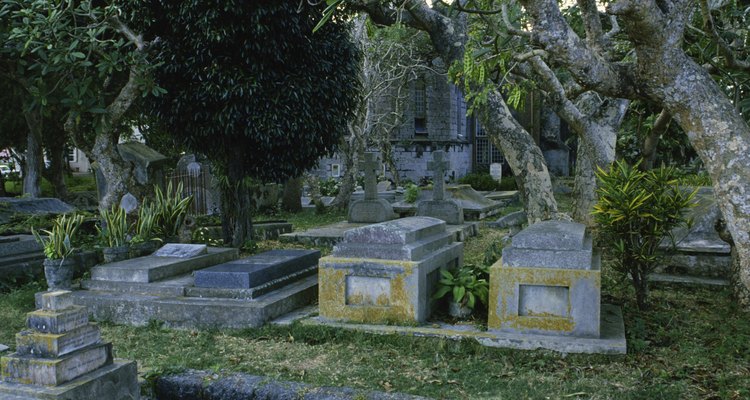
Jupiterimages/Photos.com/Getty Images
Funeral homes are caretakers of the recently deceased until burial or cremation. What happens to a body at a funeral home depends upon the wishes of the deceased, loved ones, religious rites and cultural customs. The processes involved with the remains of the recently deceased are regulated by the funeral industry and state or federal law. Important decisions about embalming, preparations for viewings or visitations and cremation occur within the funeral home.
Holding Area
Unless an autopsy is required or other unusual circumstances, a body will typically be transported to a refrigerated area within a funeral home within hours after death. In some circumstances a family may request a private autopsy which can be performed at the funeral home by a licensed pathologist. Shortly after arrival at the funeral home, bodies may be ceremoniously washed by close family and friends according to some Judaic and Islamic religious customs.
Embalming

Hemera Technologies/AbleStock.com/Getty Images
As a common practice, embalming dates back to the late 19th century. Embalming involves aspirating internal organs by removing gases and air pockets, replacing body fluids with chemicals and making a person’s remains presentable for viewing. It slows down the natural decay of a corpse, which lets the family extend the time between the death and the funeral. Embalming is not required, and it is forbidden in some religion customs such as orthodox Judaism and by Islamic religious law.
Preparation for Viewing
One of the mortician’s more delicate tasks is preparing a corpse for viewing. For many, the viewing is an important step in the grieving process. Funeral homes prepare a body in an appropriate manner that addresses the wishes and needs of loved ones. Family will provide staff with clothing, jewelry and other accessories; while discussing their wishes for makeup, hair style and appearance of the deceased in preparation for visitation or an open casket funeral.
Viewings and Visitations
Funeral homes host visitations and viewings before funerals, burials or cremations. A viewing is informal and usually restricted to close family members. A visitation is more formal and open to the public. Often, embalming will be requested for visitations to allow for a more natural looking appearance. However, embalming is typically not necessary for viewings that take place within a couple days after death. The funeral home will provide a formal viewing area for visitations.
Cremation
Cremation of human remains varies according to cultural or religious practices. Most funeral homes will transport a body to a crematory, but some large operations will have crematories on the premises. A common practice is to have a viewing or visitation at the funeral home and then have the body cremated before a funeral or memorial service. Often, a funeral home will store cremated remains for a period of time while loved ones decide on the final dispensation of the ashes.
Related Articles

What Happens at Hindu Funeral Services ...

The Common Procedures of a Catholic ...

Catholic Church Funeral Rules for ...

Reactions to Nose Piercings

How to Transport the Deceased From One ...

Christian Vs. Hindu Funeral

What Are the Dangers of Men's Brazilian ...

How to Remove an Eyebrow Tattoo

How to Darken a Henna Tattoo

What to Wear to a Baptist Funeral on ...

Do Muslims Wear White at a Funeral?

Can a Catholic Mass Be Held at the ...

How to Dress for a Bris Ceremony

How to Keep Wedding Dresses From ...

How to Cook Salmon Fillet with the Skin ...

Funeral Etiquette & Who Buys Casket ...

How to Clean Tattoos With Rubbing ...

The Advantages of Pickling Foods

What Is Transitional Housing?

The Fastest Way to Get Married in New ...
References
Writer Bio
John Peterson published his first article in 1992. Having written extensively on North American archaeology and material culture, he has contributed to various archaeological journals and publications. Peterson has a Bachelor of Arts from Eastern New Mexico University and a Master of Arts from the University of Nebraska, both in anthropology, as well as a Bachelor of Arts in history from Columbia College.
Photo Credits
Jupiterimages/Photos.com/Getty Images